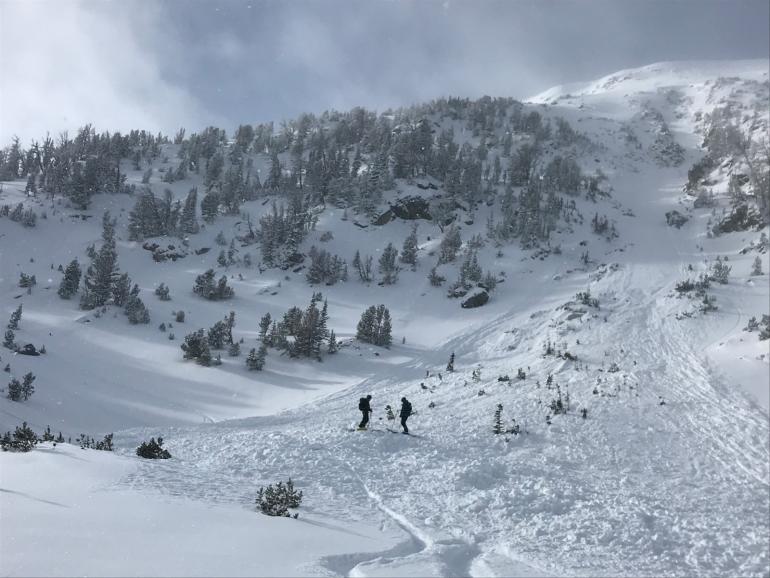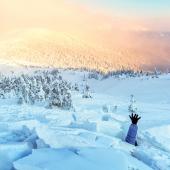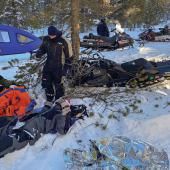Avalanche Safety
Last winter, 28 people died in avalanches in the United States—and almost all were recreationists. In over 90% of these cases, either the victim or someone in the party triggered the slide. Basically, when it comes to avalanches, we tend to kill ourselves. Contrary to popular belief, we’re not hapless victims to Mother Nature’s wrath. Whether it’s skiing, snowboarding, or snowmobiling, we choose to play in avalanche terrain since that’s where the good powder and turns are. We choose our lines, our partners, and our routes, and face dire consequences when we’re wrong. Fortunately, there are a few rules of thumb that can shift the odds in our favor of having a safe outing.
Know how to recognize avalanche terrain. Open slopes steeper than 30 degrees are capable of avalanching. Measuring the slope with an inclinometer is the only reliable way to determine its angle.
Pay attention to signs of instability. Recent avalanche activity is Mother Nature’s number-one sign that the snow is unstable. Stay off of slopes that have similar aspect and elevation since these will have a similar snowpack. “Whumphing” or collapsing of the snow underfoot is another classic sign of instability. Both of these should get your attention and steer you away from avalanche terrain.
Always travel with a partner and only put one person at a time on an avalanche slope. This safe-travel ritual is our backup in case we make a bad call and trigger a slide. With only one person caught, the rest of the team can effect a rescue.
Carry rescue gear and know how to use it. An avalanche transceiver, sturdy shovel, and probe poles should always be on your body.
Call the Avalanche Center. We’ll take some of the guesswork out of determining the avalanche danger. Every morning by 7:30am we put out a detailed weather forecast and snowpack discussion outlining snow stability concerns.
Take an avalanche class. Our brain is the most powerful tool we have. An avalanche awareness class will help nourish our mind and keep us safer when we play outdoors.
The Gallatin National Forest Avalanche Center has a website with tons of useful avalanche information. Check out www.mtavalanche.com for the daily advisory, education schedules, pictures, and great weather data.
Doug Chabot is the director of Gallatin National Forest Avalanche Center.












